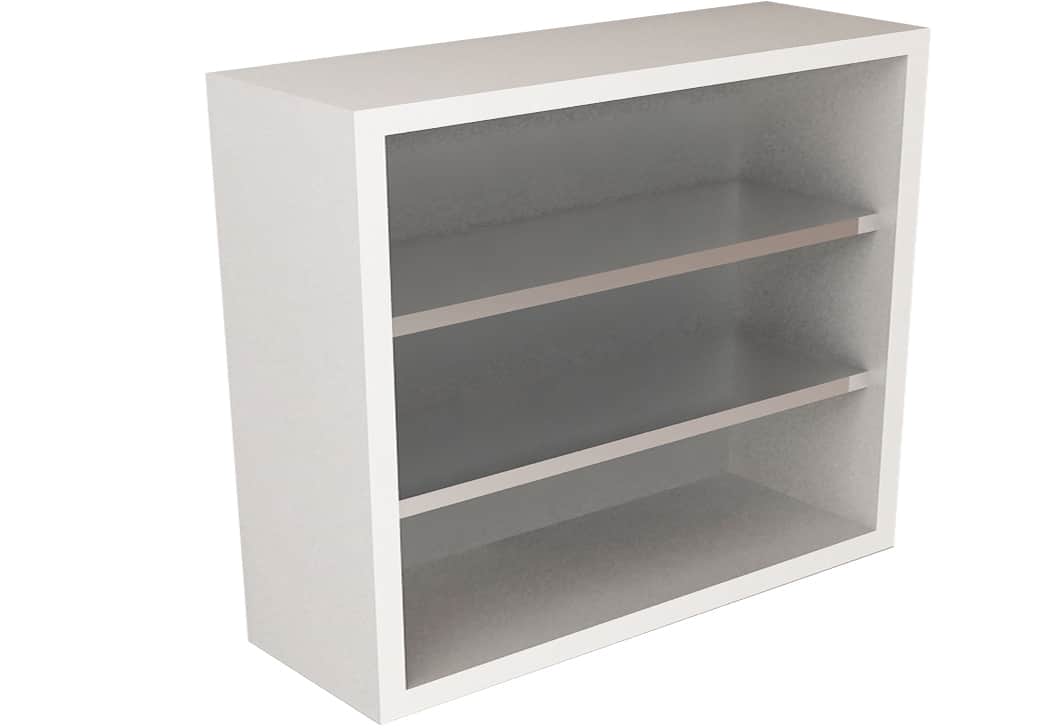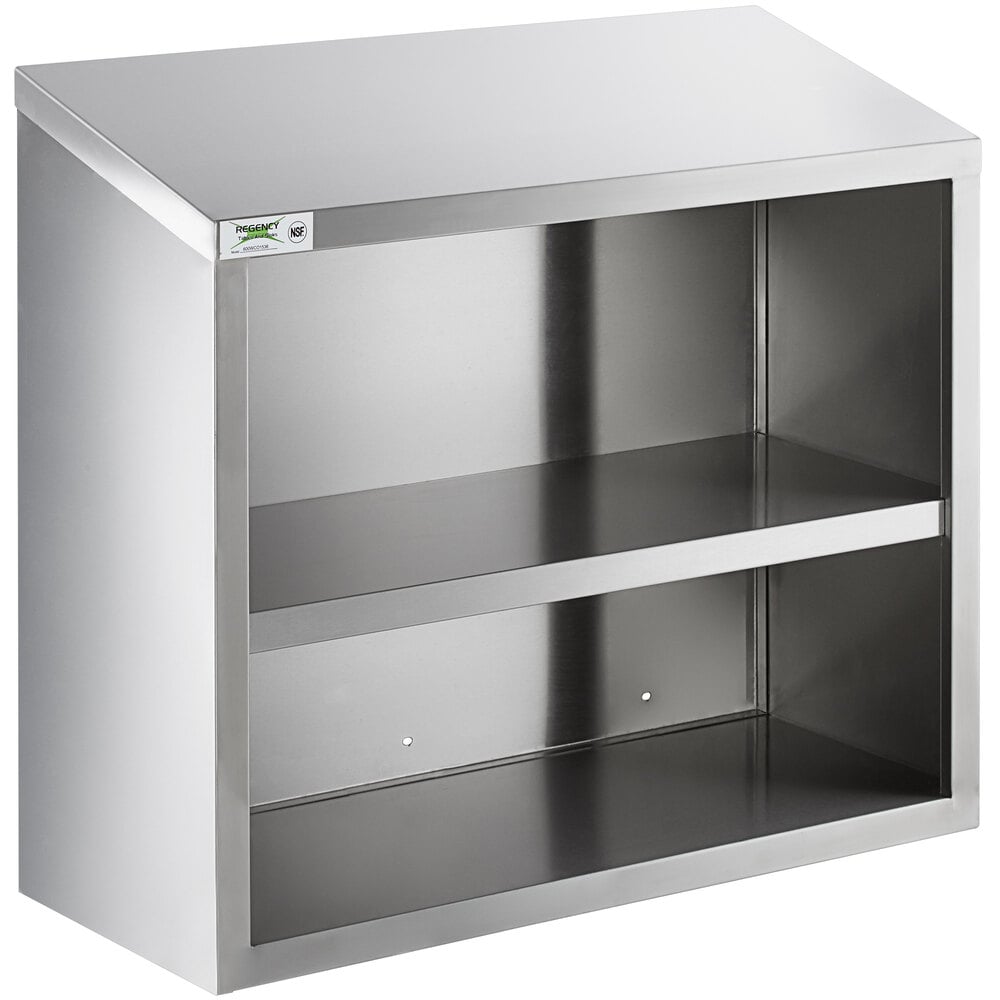Understanding Open Face Wall Cabinets

Open face wall cabinets, also known as open shelving, are a modern and increasingly popular design choice for kitchens and living spaces. These cabinets feature a minimalist aesthetic, showcasing the contents within while eliminating traditional cabinet doors. This design approach not only enhances visual appeal but also provides a sense of openness and accessibility.
Benefits of Open Face Wall Cabinets
Open face wall cabinets offer several advantages over traditional closed cabinets, making them a desirable option for homeowners seeking functionality and style.
- Enhanced Visual Appeal: Open shelves create a visually appealing and spacious feel, showcasing your curated collection of dishes, glassware, or decorative items. This open design can make a small kitchen feel larger and more inviting.
- Easy Accessibility: Open shelves provide immediate access to your belongings, eliminating the need to open and close cabinet doors. This is particularly beneficial for frequently used items like spices, mugs, or cookbooks.
- Flexibility and Organization: Open shelves offer flexibility in arranging and organizing items. You can group similar items together or create a visually appealing display. They also provide an opportunity to showcase unique or vintage pieces.
- Air Circulation and Ventilation: Open shelves allow for better air circulation and ventilation, preventing moisture buildup and mold growth. This is especially important in kitchens, where humidity levels can fluctuate.
- Cost-Effective: Open shelves are generally less expensive to install than traditional cabinets, as they eliminate the need for doors, hinges, and hardware.
Comparison to Traditional Closed Cabinets
While open face wall cabinets offer several advantages, it’s essential to consider their limitations compared to traditional closed cabinets.
- Dust Accumulation: Open shelves are more susceptible to dust accumulation, requiring more frequent cleaning to maintain a pristine appearance. This can be a drawback in environments with high dust levels.
- Limited Storage Capacity: Open shelves typically have less storage capacity than closed cabinets, as they lack the enclosed space to store items vertically. This can be a challenge in kitchens with limited counter space.
- Safety Concerns: Open shelves may not be suitable for storing fragile items or hazardous materials, as they are exposed to potential damage or accidental spills. Consider alternative storage solutions for delicate or sensitive items.
Types of Open Face Wall Cabinets

Open face wall cabinets offer a modern and functional approach to storage and display. They come in various styles and configurations, catering to different aesthetic preferences and functional needs.
Materials Used in Open Face Wall Cabinets
The materials used in constructing open face wall cabinets influence their durability, aesthetics, and price.
- Wood: Wood is a popular material for open face wall cabinets due to its natural beauty, durability, and versatility. It can be stained or painted to match any décor. Popular wood choices include oak, maple, cherry, and walnut.
- Metal: Metal open face wall cabinets offer a sleek and modern look. They are often made from steel or aluminum, which are durable and resistant to corrosion. Metal cabinets can be finished in various colors, including black, white, and silver.
- Glass: Glass open face wall cabinets provide a contemporary and minimalist aesthetic. They are often used for display purposes, allowing the contents to be visible. Glass cabinets can be made from tempered glass for increased durability.
Styles and Finishes for Open Face Wall Cabinets
Open face wall cabinets can be designed in a variety of styles to complement different décor themes.
- Rustic: Rustic open face wall cabinets often feature distressed wood, exposed beams, and natural finishes. They add a warm and inviting feel to the space.
- Modern: Modern open face wall cabinets are characterized by clean lines, minimalist designs, and sleek finishes. They are often made from metal or glass, and they can be painted in bold colors or metallic finishes.
- Minimalist: Minimalist open face wall cabinets are designed to be simple and functional. They are often made from wood or metal and feature a simple, uncluttered design.
Designing and Installing Open Face Wall Cabinets

Designing and installing open face wall cabinets requires careful planning and execution to ensure both functionality and aesthetics. This process involves considering factors such as space, functionality, and aesthetics, as well as selecting the right materials and installation methods.
Designing Open Face Wall Cabinets
The design of open face wall cabinets is crucial for their functionality and aesthetics. Consider these factors when designing your cabinets:
- Space: Measure the available space carefully and determine the dimensions of the cabinets that will fit comfortably without obstructing movement or access to other areas.
- Functionality: Determine the purpose of the cabinets and what items you plan to store. For example, if you are using them to display decorative items, you may want to choose cabinets with shelves or open compartments. If you are using them for storage, you may want to choose cabinets with doors or drawers.
- Aesthetics: Consider the overall style of your room and choose cabinets that complement the existing décor. You can choose from a variety of materials, finishes, and styles to create a look that you love.
Installing Open Face Wall Cabinets
Installing open face wall cabinets involves several steps, including measuring, cutting, and mounting.
Measuring and Cutting
- Measure the space: Accurately measure the available space where you plan to install the cabinets. Consider the height, width, and depth of the cabinets and ensure that they will fit comfortably within the space.
- Cut the cabinets: If necessary, cut the cabinets to size using a saw or other cutting tools. Ensure that the cuts are precise and that the cabinets fit together seamlessly.
Mounting Open Face Wall Cabinets
There are several methods for securing open face wall cabinets to the wall, each with its own advantages and disadvantages.
Brackets
Brackets are a common method for mounting open face wall cabinets. They are typically made of metal or wood and are attached to the wall using screws or nails.
Brackets provide a sturdy and secure mounting solution for open face wall cabinets. They are also relatively easy to install.
Anchors
Anchors are used to secure cabinets to walls made of drywall or other materials that cannot support the weight of the cabinets alone. They are typically made of plastic, metal, or concrete and are inserted into the wall using a drill.
Anchors are essential for securing heavy cabinets to drywall or other weak walls. They provide a secure and reliable mounting solution.
Floating Shelves
Floating shelves are a popular choice for open face wall cabinets, as they offer a clean and minimalist look. They are typically made of wood or metal and are attached to the wall using concealed brackets or mounting systems.
Floating shelves provide a sleek and modern look and are ideal for displaying decorative items or showcasing your favorite books. They are relatively easy to install and require minimal hardware.
Open face wall cabinets are great for showing off your prized possessions, but let’s be real, sometimes you need a little more privacy. That’s where a sleek grey wood lateral file cabinet comes in handy. It’s like a secret compartment for all your “adulting” documents, leaving your open face cabinets free for the stuff that actually makes your home look good.
Open face wall cabinets are great for showcasing your prized possessions, but let’s be real, sometimes you need a place to hide the paperwork that makes your eyes glaze over. If you’re in Kenya and looking for a sturdy and stylish solution, check out wooden filing cabinets in Kenya.
They might not be as glamorous as open face cabinets, but they’ll keep your paperwork organized and out of sight (which is probably a good thing). Just remember, even with a filing cabinet, those tax forms have a way of finding you.
